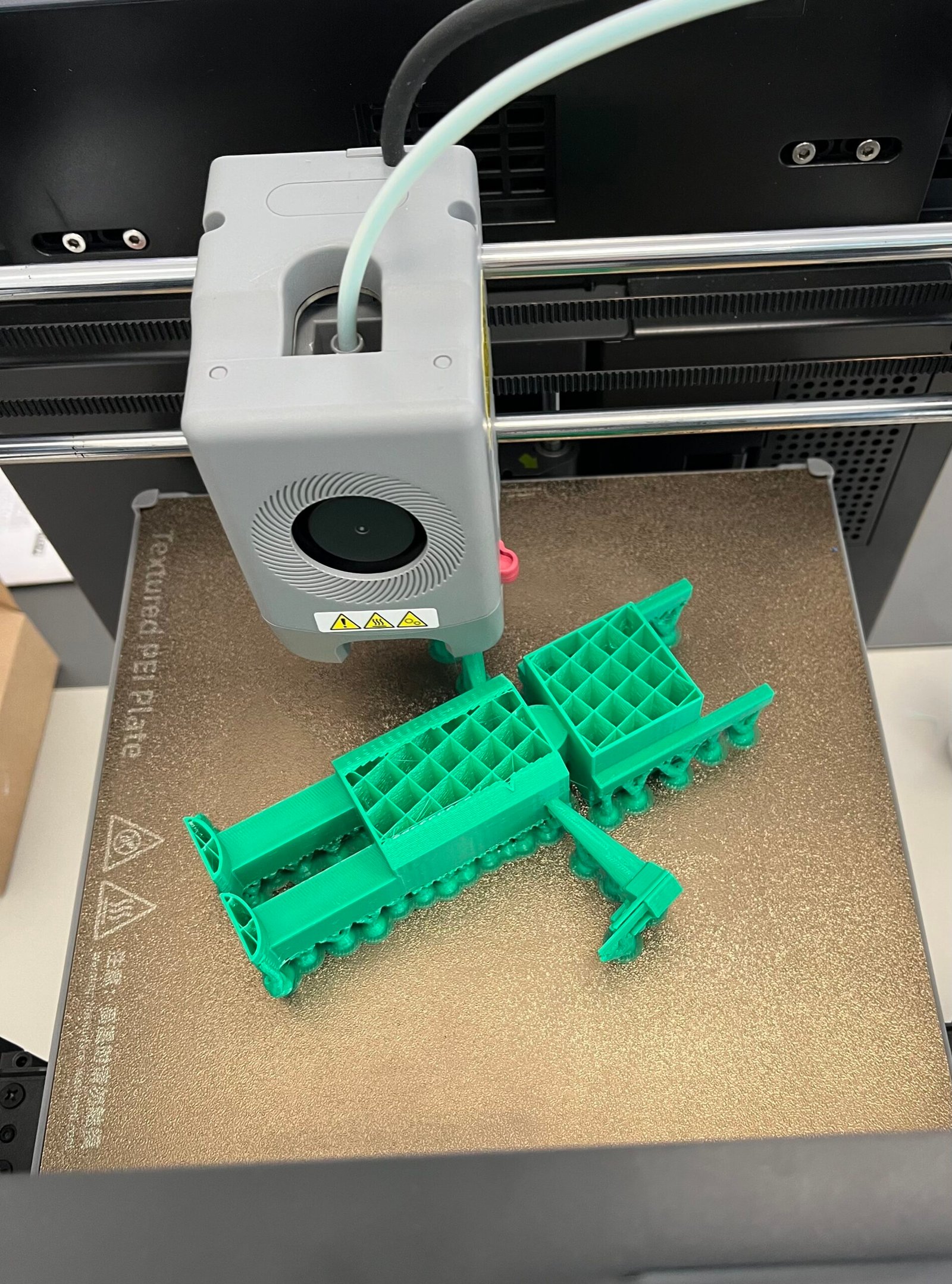Your cart is currently empty!

The First Time Fifth Graders Used 3D Design – Here’s What They Built
When Fifth Graders Built a Robot From Geometric Shapes
The fifth-grade teacher was teaching three-dimensional geometric figures – cubes, cylinders, spheres, pyramids. Standard curriculum. The kind of lesson that often stays abstract, where students memorize names and properties but struggle to really see how these shapes exist in space.
We decided to change that.
What if, instead of just learning about geometric figures, students could use them to build something? Not on paper. Something real. Something they designed themselves.
We proposed a project: design and print a robot using only geometric shapes.
Dividing the Challenge
We split the class into four groups, each with a specific mission:
- Group one: design the robot’s head
- Group two: design the body
- Group three: design the hands
- Group four: design the legs
Each group had to choose from specific geometric figures. They needed to consider size and dimensions – not just what looked cool, but what would actually work when printed and assembled. The parts had to fit together into one cohesive robot.
This was their first time using Tinkercad. We wanted to make it accessible, achievable, not overwhelming. No prior design experience required. Just geometric shapes, imagination, and collaboration.
They went straight into the software. No paper sketches. No practice rounds. Just students, computers, and the challenge of turning abstract geometry into something tangible.
What Happened in Those Groups
The engagement was immediate and total.
Students who might normally sit back in a geometry lesson were leaning in, debating which shapes to use. Groups negotiated: if we make the head this size, will it fit on the body that group is designing? If we use a cylinder for the arm, how do we attach the hand?
And then the creativity emerged within the constraints.
One group wrote “Nike” on the robot’s footwear. Another added a name to the face. They were working within strict geometric parameters – specific shapes, coordinated dimensions, limited time – but they found room for personality, for humor, for making this robot theirs.
There were no struggling students in this project. Or rather, every student found a way to contribute. Some excelled at spatial reasoning. Others brought creative ideas. Some became the group’s technical experts, figuring out how Tinkercad worked. Everyone had a role.
When the Robot Came Together
After each group finished their part in Tinkercad, we brought all four pieces together in one file – head, body, hands, legs – and assembled them digitally. The students watched as their separate designs merged into one complete robot on the screen.
Then we printed the whole thing.
When it emerged from the printer as one solid piece, something remarkable happened. The students were quiet for a moment. This thing they’d designed in separate groups, coordinating their dimensions and shapes, actually existed as a unified robot. It was real. It was theirs.
Then came the question that told us everything about how they felt about this project:
“Can we put it somewhere very safe? Somewhere no one can damage it?”
They didn’t see it as a class assignment to be graded and forgotten. They saw it as something valuable that needed protection. Something worth keeping.
What They Actually Learned
The curriculum said we were teaching three-dimensional geometric figures. And we did – students learned about cubes, cylinders, spheres, and how they occupy space.
But they learned so much more:
Creative thinking within constraints – How do you make something unique when you can only use specific shapes?
Problem-solving in real-time – When dimensions don’t match, you have to adjust and recalibrate.
Collaborative design – Your work affects the other three groups. You have to communicate, coordinate, compromise.
3D design basics – First exposure to software that turns ideas into printable objects.
The printing process itself – Understanding that design choices affect print time, material use, and structural integrity.
All of this happened in a geometry lesson. The geometric figures weren’t just abstract concepts anymore – they were building blocks for creation.
The Difference 3D Printing Made
Could students have drawn robots using geometric shapes? Yes. Could they have built them from paper or cardboard? Sure.
But there’s something fundamentally different about designing something on a computer and watching it materialize, layer by layer, into a physical object. About holding something you designed and feeling its weight, its solidity.
The students didn’t ask to keep their drawings in a safe place. They asked to protect their robot.
That’s the difference between learning about geometry and using geometry to make something real.

Leave a Reply